Gregory A. Fournier's Blog, page 40
December 21, 2013
Merry Christmas History From The Ford Rotunda

Over a period of twenty-seven years, the Ford Rotunda hosted over 16.5 million visitors. In the 1950's, it was the fifth most popular tourist attraction in the United States.
The building was ten stories tall. Its steel and aluminum framework was covered with Indiana Limestone to match the Ford Motor Company's Administration Building across Schaefer Road. The building resembled four gear wheels stacked in decreasing size from the top to bottom.
It was originally built for the Chicago World's Fair and opened to the public on May 14, 1936. After the fair was over, the building was reconstructed on a site in Dearborn, Michigan and used as Ford's World Headquarters for a brief time. The building was closed to the public during World War Two and used as a tech center for military training.

The Ford Rotunda was reopened on June 16th, 1953 to celebrate Ford Motor Company's fiftieth year in business. It was used as an exhibition center displaying all the recent models of Ford automobiles. In addition to a Test Drive Track ride which circled the building, other exhibits were The City of Tomorrow, The Hall of Science, and something called The Drama of Transportation.
Fifty-one years ago on November 9, 1962, the roof was being waterproofed with hot tar in preparation for the annual Christmas Fantasy exhibition. The roof caught fire and within an hour, the building had burned down. The nine year long holiday tradition came to an end.
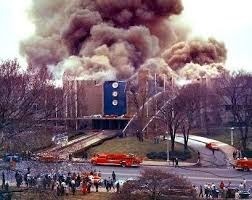
Those of us from the Detroit area who grew up when the Rotunda was in its heyday, namely we Baby Boomers, sadly remember the passing of this great Christmas tradition.
For a video presentation of the Ford Rotunda from the Dearborn Historical Society, view this link: http://vimeo.com/46364168
For more detailed history of the Ford Rotunda, consult this link: http://automotivemileposts.com/autobrevity/fordrotunda.html
Published on December 21, 2013 06:42
December 17, 2013
The Grande Ballroom - Is There a Future For Detroit's Former Rock and Roll Mecca?
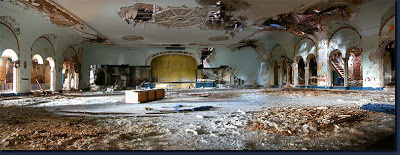 The Grande Ballroom as it exists in ruins today.
The Grande Ballroom as it exists in ruins today.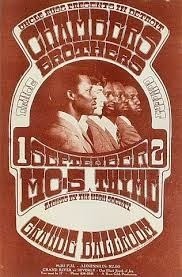 In the mid to late sixties, the Grande Ballroom was the place to be on the weekends in Detroit. The Motor City had no shortage of high energy, head banging garage bands competing with one another in frequent "Battle of the Bands" events. Local groups like MC5 (Motor City 5), SRC (my fav), Frost, The Stooges with Iggy Pop, The Amboy Dukes, Bob Seger, Grand Funk Railroad, and many others each had a dedicated following.
In the mid to late sixties, the Grande Ballroom was the place to be on the weekends in Detroit. The Motor City had no shortage of high energy, head banging garage bands competing with one another in frequent "Battle of the Bands" events. Local groups like MC5 (Motor City 5), SRC (my fav), Frost, The Stooges with Iggy Pop, The Amboy Dukes, Bob Seger, Grand Funk Railroad, and many others each had a dedicated following.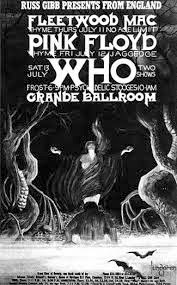 Top-shelf bands from around the country, and from England in particular, saw Detroit's Grande Ballroom as the undisputed rock
Top-shelf bands from around the country, and from England in particular, saw Detroit's Grande Ballroom as the undisputed rock and roll Mecca of the Midwest. The Jefferson Airplane, Cream with Eric Clapton, Big Brother and the Holding Company with Janis Joplin, Jethro Tull, The Spirit, The Grateful Dead, Frank Zappa and the Mothers of Invention, Savoy Brown, The Moody Blues, and many others played on the Grande stage that once hosted the Glenn Miller Band, Benny Goodman, the Dorsey brothers, and other swing dance era big bands. There was a lot of music history made within these walls.
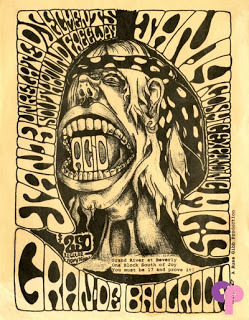 During the turbulent Sixties, the Grande Ballroom served up an uneasy mixture of high energy music and counter culture propaganda centered around Detroit's self-proclaimed guru, John Sinclair. John managed some local Detroit bands and led a group called Trans Love Energies, which morphed into the White Panther Party when the group moved to Ann Arbor because of police harassment.
During the turbulent Sixties, the Grande Ballroom served up an uneasy mixture of high energy music and counter culture propaganda centered around Detroit's self-proclaimed guru, John Sinclair. John managed some local Detroit bands and led a group called Trans Love Energies, which morphed into the White Panther Party when the group moved to Ann Arbor because of police harassment.
Is there a future for a restored Grande Ballroom in the new Detroit? Some people think so. Check out the link for more discussion of restoring this landmark which holds so many memories for inner-city and suburban Detroiters.
http://www.mlive.com/entertainment/detroit/index.ssf/2013/07/rock_and_roll_hall_of_fame_off.html
For more on the Grande Ballroom: http://fornology.blogspot.com/2012/04/grande-ballroom-detroits-sixties-rock.html
Published on December 17, 2013 08:53
December 15, 2013
Harry Bennett's Role in the Ypsilanti Torch Murders of August 11, 1931
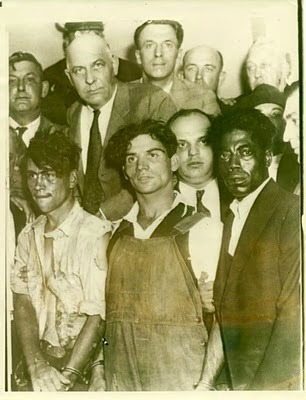 The Torch Murderers protected from the lynch mob outside by Washtenaw County Police and Harry Bennett's Ford Motor Company "Servicemen."
The Torch Murderers protected from the lynch mob outside by Washtenaw County Police and Harry Bennett's Ford Motor Company "Servicemen." The Torch Murders were among the most horrific crimes in Ypsilanti history to that date. On August 11, 1931, three young men who had been drinking whiskey at a local speakeasy decided to go out on a prowl in their car and rob somebody. In the early morning hours, robbery was the least of their crimes.
***
The City of Ypsilanti thrived before and during World War I. The Huron River provided a good source of reliable water power, and local industries provided mercantile goods for the war movement. The train station in Ypsi's Depot Town helped make Ypsilanti a thriving farm and light industry center. But that wasn't to last long.
The Roaring Twenties saw some fundamental changes in the thinking of young Americans and Ypsilanti wasn't immune. Many family farms, the traditional backbone of Ypsilanti's economy, were no longer being handed down from father to son.
Once the farm boys joined the infantry and went to France, it was hard to keep them on the farm. The automobile was still relatively new and created new opportunities for people. It changed the way most people lived. Americans were intoxicated with their new sense of freedom, courtesy of Henry Ford's inexpensive Model T.
Like the rest of the country though, Ypsilanti went dry during Prohibition. Right! The Huron River was a highway for booze, smuggled into Detroit from Windsor, Ontario. Society was undergoing a fundamental paradigm shift in the Twenties; then, the Great Depression of the 1930s struck the country with a vengeance and knocked the stuffing out of the economy. Ypsilanti was hard hit.
***
In 1931, scratching for a living must not have been easy for the three shiftless young men looking to commit a simple robbery for an easy payday. They pulled their Model T Ford into Peninsular Grove along a dirt road bordering the north edge of the Huron River. The area was well-known and well-used as a "lovers lane." Today, it is known as Peninsular Park off of LaForge Road.
Two teen aged couples were "parking" when they were surprised by three shadowy figures. The four teens were beaten and robbed; the two girls were raped; all were murdered. The final indignity was that their bodies were soaked in gasoline and torched in their car at another location.
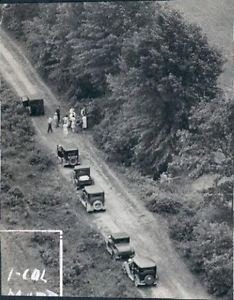 Site of Torch Murders - Tuttle RoadThe horrific nature of the crime caught the attention of Mr. Henry Bennett, known to his friends and foes alike as "Harry," Henry Ford's head of FoMoCo security and UAW union- busting thug.
Site of Torch Murders - Tuttle RoadThe horrific nature of the crime caught the attention of Mr. Henry Bennett, known to his friends and foes alike as "Harry," Henry Ford's head of FoMoCo security and UAW union- busting thug. Bennett had a chateau-like home built on the north bank of the Huron River off Geddes Road between Ypsilanti and Ann Arbor. The property was bordered by a concrete and iron reinforced wall, courtesy of FoMoCo.
Henry Ford also had a private railroad spur built leading onto Bennett's property, so his security chief could travel to Detroit in record time if he needed to. This was before Interstate 94 was built, and Michigan Avenue was the most direct route into Detroit.
Bennett also had a speedboat with a hefty inboard engine that was all gassed up and ready to go at a moment's notice. The Huron River ran southeast to the Detroit River, just south of the island of Grosse Ile where Bennett kept another "safe house."
Seems like being in the "security" business was pretty lucrative for Mr. Bennett. Sarcasm aside, this shows how important Henry Ford believed Bennett was to his "organization."
After the untimely death of one Joseph York, a Detroit gangster who tried to kill Harry Bennett in his home, Bennett had Ford architects design and build several strategically located crenelated gun towers on the roof of his home, staffed around the clock by Ford Servicemen. The entire area surrounding the Bennett Castle for many miles was known as a no-mans' land for criminal activity. Then the Torch Murders happened almost on his doorstep.
 Harry Bennett's Castle
Harry Bennett's CastleIn a book published in 2003 with the dreadful title of Henry Ford: Critical Evaluations in Business and Management, Vol. 1, authors John Cunningham Wood and Michael C. Wood wrote about Harry Bennett's role in the Ypsilanti Torch Murders.
"The last crime of any consequence in the area occurred in 1931 (These authors obviously hadn't heard about John Norman Collins) and Bennett cleared it up within forty-eight hours. It was a thoroughly horrible affair. It involved rape and murder, and the incineration of two young couples in a car parked along a road not far from the estate.
"Bennett was invited to participate in the case by a local sheriff, and he soon had his Servicemen swarming over the countryside. Under the noses of the state troopers and the county officials, he shifted the scene of the crime a few feet to bring it into the jurisdiction of a hanging judge (note: Michigan has never been a death penalty state).
"Then he uncovered two informers who named a couple of possible suspects. Taking one of the suspects in tow, Bennett, together with Robert Taylor, the head of the Ford Sociological Department,
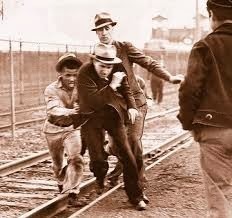 Ford Servicemen in action.and one of his towering Ford Servicemen, repaired to the basement of his fortified house. There, while one of his companions created an enormous racket with an electric (weight) reducing machine, Bennett undertook to get a confession out of the suspect.
Ford Servicemen in action.and one of his towering Ford Servicemen, repaired to the basement of his fortified house. There, while one of his companions created an enormous racket with an electric (weight) reducing machine, Bennett undertook to get a confession out of the suspect."(Bennett) interrupted this job occasionally to dash upstairs and pour a beer for the county sheriff who visited him inopportunely before his 'guest' had begun to talk. He tactfully neglected to advise the sheriff of what was going on below, and it was not until he had results that he turned his captive over to the police.
"The Torch Murder Case, as it became to be known, was rapidly brought to a successful conclusion. Bennett's captive and two others were sent to Marquette Penitentiary for life. While they were being transported to jail, the prisoners were protected from a lynch mob by Bennett and his Serviceman as well as the police."
***After the speedy court proceedings, the accused were indicted, pled guilty, and were sentenced all in the same proceeding. They were hustled down the back stairs of the courthouse and shoved into the backseat of a souped-up Mercury, driven by Harry Bennett himself, with a three car police escort and delivered alive to Jackson Prison sixty miles west of Ypsilanti.
***
For a much more detailed account of The Torch Murders, consult Judge Edward Deake's account found in the Ypsilanti Historical Society's publication Ypsilanti Gleanings:http://ypsigleanings.aadl.org/ypsigle...
For more information on Harry Bennett, check out a previous post on this blog: http://fornology.blogspot.com/2012/09...
Published on December 15, 2013 16:01
December 12, 2013
Mental Health and John Norman Collins - Two Extremes Too Hard To Comprehend At Once

Doing research for The Rainy Day Murders has lead down corridors my researcher and I could not have envisioned when we began this true crime project over three years ago. But one key area of information has remained closed to us, the mental health records of John Norman Collins. That information is privileged and protected.
Shortly after Collins was arrested, his second attorney, court appointed Richard Ryan, arranged a "private" lie detector test for Collins to take. After the examiner revealed the results to the defense attorney, Ryan suggested to John's mother that they go for a diminished capacity plea, commonly known as an insanity defense.
Loretta Collins became unglued and fired Ryan on the spot. He is said to have left the conference room shaken but no doubt relieved to be off the case. When the legal team of Joseph Louisell and Neil Fink took over, there was no more talk of an insanity defense.
Early on in our investigative research, my researcher, Ryan M. Place and I invoked the Freedom of Information Act (FOIA) to obtain Michigan Department of Corrections (MDOC) documents. Every time the Collins' case comes up for review and reclassification, Collins is offered psychiatric services. In the space provided on the form, he always writes, "Not interested."
Most people would agree that it is impossible to help someone who doesn't want to be helped. What good are psychological and psychiatric services to a person whose existence is built upon the mirrored reality of delusion? To break through that wall of falsehoods would be to admit guilt and responsibility; a narcissistic, psychotic personality will not tolerate this.
***
Several months ago, I received an email from Kristin Bronson, whose father worked briefly with John Norman Collins in an official mental health capacity. What follows is a loving tribute to her father:
"My father (now deceased) was in mental health all his life, first at Mercywood Sanatorium and then at the University of Michigan Neuropsychiatric Institute. He worked with a vast number and all kinds of patients and always worked very hard to find a way to reach and help them. He usually succeeded, though not often enough. One lost is one too many.
 "My father was involved in the evaluation and treatment of John Norman Collins. He was the only patient I am aware of that my father bailed out from his case. It gave him the shudders.
"My father was involved in the evaluation and treatment of John Norman Collins. He was the only patient I am aware of that my father bailed out from his case. It gave him the shudders. "My dad said that Collins was never going to change. He was too evil. It really got to him, even just being around Collins. He was wickedness incarnate! There were other killers my father worked with, but this one was too much even for him who loved every human soul alive.
"Rest in peace my beloved father, William Arthur Bronson, born September 7, 1926. You helped so many people regain their lives and paid a price to do so."
Published on December 12, 2013 06:08
December 4, 2013
Tuesday, December 10th, "A New Kind of Monster" on Investigation Discovery
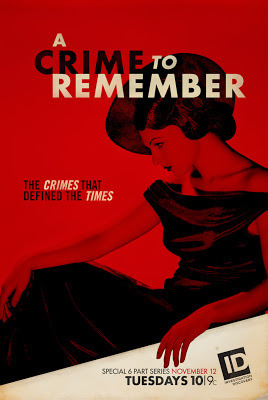 Early in 2013, I was asked by XCON Productions if I would be interested in appearing on an episode of a new true crime series they were doing called A Crime To Remember.
Early in 2013, I was asked by XCON Productions if I would be interested in appearing on an episode of a new true crime series they were doing called A Crime To Remember. One of their staffers had seen my blog posts on the Washtenaw County Murders of 1967-1969 and their presumed killer, John Norman Collins.
I say "presumed" because Collins was only charged with one of the seven local murders before being sentenced to "Life" in prison. With his arrest and conviction, the series of grisly sex-slayings in the Ypsilanti and Ann Arbor, Michigan ended.

The episode entitled "A New Kind of Monster" will air this Tuesday, December 10th, at 10:00 PM Eastern time. Other people appearing on the program will be Dr. Katherine Ramsland, forensic psychologist; Larry Mathewson, former Eastern Michigan University policeman; Douglas Harvey, former Washtenaw County Sheriff; and others.
Re-enactments using the actual names of the people involved in these matters will be a feature of this program, which is a thumbnail sketch of an extremely complicated, controversial, and convoluted case.
I was put on the program because of the strength of my blog posts on the subject at large. For the last three and a half years, my researcher, Ryan M. Place and I have been working tirelessly on these other cases which have remained officially unsolved.
 Soon, I will be finished with the first draft of The Rainy Day Murders. My treatment of the subject benefits from forty-five years of hindsight and the living history of people who have had some direct connection with these events.
Soon, I will be finished with the first draft of The Rainy Day Murders. My treatment of the subject benefits from forty-five years of hindsight and the living history of people who have had some direct connection with these events. Once my true crime account goes through revision and editing, I hope to get it published sometime next year.
In addition to giving the latest information known about each of the murders and recreating the "lost" court case, which the Washtenaw County Courthouse has "purged" from their records, my book will cover for the first time ever, John Norman Collins' prison years and his efforts to get out of prison.
When Ryan and I started this project almost four years ago, we could not have imagined where it would lead. Many thanks to all the individuals who have come forward with information on these cases and also to the many people in Ypsilanti and Ann Arbor affected by this dark period in Washtenaw County's history who were willing to share their stories with us.
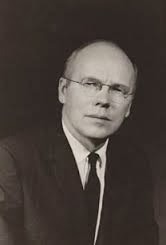 William Treml (1929 - 2013)And a special thanks needs to go out to all the reporters who covered these murders and the subsequent trial, especially William Treml of The Ann Arbor News, who died last month.
William Treml (1929 - 2013)And a special thanks needs to go out to all the reporters who covered these murders and the subsequent trial, especially William Treml of The Ann Arbor News, who died last month. Without their efforts, this story would have been lost to time and institutional neglect. A debt needs to be paid to history, and its on their shoulders I stand.
Check this link for more information about the press and these cases: http://fornology.blogspot.com/2012/10/the-fourth-estate-proves-its-worth-in.html
Published on December 04, 2013 11:47
December 1, 2013
The Roxie Ann Phillips California Case. Did John Norman Collins Act Alone?
 In August of 1969 after working on a recent unsolved murder case in Salinas, California for two frustrating weeks, a tired police investigator sat down to dinner in front of his television to watch the national news.
In August of 1969 after working on a recent unsolved murder case in Salinas, California for two frustrating weeks, a tired police investigator sat down to dinner in front of his television to watch the national news. A break had been made in the Michigan murder case of Karen Sue Beineman. An unlikely suspect by the name of John Norman Collins, a student at Eastern Michigan University had been arrested.
The story went on to say that Collins had recently returned from a short vacation in California. The network showed a picture of him taking a perp walk into the Washtenaw County Courthouse in Ypsilanti, Michigan. Mention was also made in the story that a silver Oldsmobile Cutlass was believed to have been used to dump the coed's body.
Other circumstances of the crimes were eerily similar. Both women died of strangulation, both were sexually violated, both were dumped in secluded areas, and both were wearing only their sandals.
The Salinas Police Department contacted the Michigan State Police to share information. When the MSP were told that the Salinas police had found an abandoned house trailer thought to be the murder site, Detective Tom Nasser and Sergeant Kennard Christensen from the Plymouth Crime Center flew out to Salinas to help with their investigation. Both men testified before the Monterey County Grand Jury inquest.

Among other damning evidence presented before the grand jury, an eyewitness placed a young man at the scene of seventeen year old Roxie Ann Phillips' abduction. She saw Roxie get into a silver-gray Olds Cutlass with Michigan plates. Then he sped away, running a red light and making a hard right turn. The witness remembered the red flowered outfit Roxie was wearing that day.
A Monterey County California Grand Jury indicted Collins for the murder of Roxy Ann Phillips, a recent visitor to California from Milwaulkie, Oregon. After some bureaucratic squabbling between each state's Attorney General, Michigan Governor Milliken rejected California Governor Ronald Reagan's request for extradition.
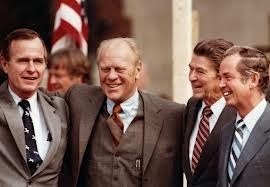 Vice President George Bush, President Gerald Ford, California Governor Ronald Reagan, and Michigan Governor William Milliken
Vice President George Bush, President Gerald Ford, California Governor Ronald Reagan, and Michigan Governor William MillikenCalifornia had a stronger case than Michigan, and it was a death penalty state. But because of the community impact that the seven unsolved murders of young women had in Washtenaw County, Governor Milliken had no choice but to try Collins in Michigan for the Beineman murder. "Life" behind bars was the maximum prison sentence a Michigan judge could levy.
***
Accompanying Collins on his fateful trip to California was his Motor Wheel work buddy and housemate, Andrew Manuel. There had been six unsolved murders in the area. Police from five departments were swarming over the area, and both men were also feeling some heat for a spate of break-ins and burglaries in the city.
Andrew was from Salinas, California and thought a month away from Ypsilanti might do them both some good. Collins and Manuel fraudulently rented a 17' long house trailer in Ypsilanti and towed it behind a silver Olds Cutlass, a new car belonging to Collins' mother, Loretta.
In their investigation of Roxie Ann Phillips' murder, the Salinas police reported finding an abandoned house trailer behind the home of Andrew Manuel's grandparents, the Salinas forensic team went to work. It was discovered that every fingerprint inside and outside the trailer had been wiped clean. When Andrew's grandparents were interviewed, they complained that the boys didn't even say goodbye before they left.
The evidence against Collins for the murder of Roxie Ann Phillips was the strongest case against him. But the detailing and abandoning of a house trailer doesn't make Andrew Manuel his accomplice in her murderer. It is apparent at the very least that he was fully aware of what his buddy had done, and he helped Collins cover it up by destroying evidence. He may also have been an accessory after the fact by helping Collins dump the body.
Why then would these guys cut their trip in half, fully detail a 17' house trailer, and then abandon it? One can only wonder what the conversation between them was on their trip back to Michigan.
***
After Collins and Manuel returned, Andrew disappeared immediately and was eventually arrested in Phoenix by the FBI. He was extradited from Arizona and returned to Michigan where he took and passed several lie detector tests clearing him of the murders of Roxy Ann Phillips and Karen Sue Beineman.
Manuel was arrested for "theft by conversion" of the house trailer and selling stolen jewelry from an Ypsilanti break-in. He was given one year probation and a $100 fine, on the understanding that he would testify for the prosecution in the case against Collins.
Andrew was given immunity. He violated his probation agreement and fled the area, only to be arrested to serve out his term in the Washtenaw County Jail. On the stand at the Collins trial, Manuel became "Helen Keller." He saw and heard nothing.
Published on December 01, 2013 12:45
November 26, 2013
Better Safe Than Sorry - Another John Norman Collins Anecdote
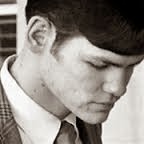 John Norman Collins - 1969 Over the last couple of years doing research for my The Rainy Day Murders true crime project, I have received many anecdotal accounts from people about encounters with John Norman Collins, alleged serial killer.
John Norman Collins - 1969 Over the last couple of years doing research for my The Rainy Day Murders true crime project, I have received many anecdotal accounts from people about encounters with John Norman Collins, alleged serial killer. I even have a couple stories of my own, having lived a block up the street from him during those frightening days.
After speaking with several of these people, I have their permission to share their stories over the next few weeks. The original emails are slightly edited for clarity.
***
Ypsilanti, Michigan
"At fifteen years old, which would have been 1966/67, I worked at Superior's (an ice cream place) on Cross Street. Walking home from work one summer evening, a car slowed behind St. John's parking lot and a nice, clean cut looking young man asked if I could give him directions to one of the dorms on Eastern Michigan University's campus.
"Since I had lived in the campus area most of my life at the point, I gave him the requested directions. He asked me if I could ride with him to show him the way, and he would then bring me back to my destination. He claimed he was from out of town and didn't know his way around.
"I declined and continued my walk home. I lived on Olive Street one block over but accessed my house via an alley that sat adjacent to it. As I walked down the alley, I saw that he was driving down my street very slowly. I ran to my back door and entered my house.
"Several weeks later, this same guy came into Superior's with a group of guys from Theta Chi (an EMU campus fraternity). One of the guys looked familiar to me, and I asked if I knew him. The guy from the car asked if I remembered him and I told him 'No.'
"When they (the Michigan State Police) arrested him (Collins) and his picture was broadcast, I remembered him as the same guy who tried to pick me up. It was just a couple of weeks before the first victim was found!
"I believe my instincts and warnings to never get in a car with a stranger may have saved my life!
- Dianne Ellis -
http://fornology.blogspot.com/2013/08/through-rapists-eyes-cautionary-advice.html
Published on November 26, 2013 10:06
November 22, 2013
The Canadian Dream of John Norman Collins
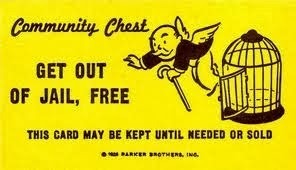
When John Norman Collins discovered in 1980 that Michigan Governor William Milliken had signed an international prisoner exchange agreement with Canada, he had an idea.
John was born in Windsor, Ontario, Canada in 1947, and moved with his mother and siblings to the Detroit area on the American side of the river in 1951 where he grew up. If he changed his adopted father's last name, Collins, and returned to his birth father's last name, Chapman, it might strengthen his claim at repatriation.
He most certainly was hoping also that the name change would help him coast under the radar of public notice and the scrutiny of the Michigan Department of Corrections (MDOC). On January 5, 1981, in an Oakland County courtroom, John Norman Collins legally became John Norman Chapman.
Collins' Michigan sentence called for Life without the possibility of parole. If transferred to Canada, he would be subject to their law which provides for the possibility of parole after fifteen years of a Life sentence. Additionally, a foreign conviction does not constitute a criminal record in Canada.
Including his time served in the Washtenaw County Jail prior to his prison sentence, Collins had served twelve years of his Life sentence. A transfer to a Canadian prison meant he would have been eligible for parole in 1985.
***
 Collins (Chapman) handled all of the paperwork successfully and he was transferred from Marquette Prison in the Upper Peninsula to Jackson Prison, closer to the Federal building in Detroit where the international transfer was to take place.
Collins (Chapman) handled all of the paperwork successfully and he was transferred from Marquette Prison in the Upper Peninsula to Jackson Prison, closer to the Federal building in Detroit where the international transfer was to take place.But on the day of the hearing, it was discovered that one signature from Ottawa was missing, so the transfer hearing was rescheduled until the paperwork caught up with the necessary signature.
Before that could happen, a fellow Marquette prison inmate familiar with Collins' plan to circumvent his full sentence blew the whistle on him. He posted a letter to the Detroit Free Press night editor, someone he had worked with on a prison story before.
The night editor gave the story to Marianne Rzepka who ran a story called "Transfer to Canada For Killer?" the next day. That evening, Michigan's Associated Press picked up the story on their wire service, and by morning, thirty-three newspapers and eight-five radio and television stations ran with the story.
When the prosecutor of the case, William Delhey heard of the transfer request, he immediately contacted the parents of Karen Sue Beineman and they started making phone calls and writing letters.
To convince John Norman Collins' last remaining Canadian relatives not to sponsor him for eventual parole, a letter of some graphic detail about the case and other troubling details to convince his relatives to withdraw their support was sent by Delhey to their Canadian home.
When Collins' uncle received a call from the Canadian Director of Prisons, he was told to stay away from the case due to its graphic nature and content. After reading about the details of the case, Mr. Chapman, John's paternal uncle, refused to support Collins any further.
In a collect phone call from prison, Collins became unhinged when he was told that he didn't have the support or acknowledgement of his Canadian relatives, an essential part of the transfer agreement.
John's Canadian cousin remembers it this way: "When my Dad realized that John was lying to him about his innocence, my Dad told him off in no uncertain terms.... There were some colorful metaphors thrown around and it was after that, that my Dad refused to take any more of John's collect phone calls from prison, but he never stopped me from writing him.... I was in the living room watching TV, so I heard everything."
"After my Dad got off the phone, he spoke with my Mom out on the balcony. When they came inside, he sat me down and spoke with me. In that conversation, he told me that some day, John might try the same thing on me, as he did with him.... My Dad was only looking out for me and wanted to let me know that this possibility might happen. And the truth is - it did!"
***
On another front, the MDOC was getting heat from the press, the public, and the politicians. The MDOC and Marquette's warden, T.H. Koehler, would have liked to trade off their most notorious inmate. The warden was quoted as saying, "John Norman Collins is the only inmate in this prison who has a book about him for sale in the prison gift shop."
On January 20, 1982, MDOC's Deputy Director, Robert Brown Jr., revoked approval of Collins' transfer bid on the grounds that John Norman Collins was a naturalized American citizen raised in the United States, and he has had minimal contact with his few surviving Canadian relatives over the years.

Collins was immediately shuttled by prison van back up to Marquette Branch Prison to serve out the rest of his Life sentence, only to find someone else occupying his former cell. The warden hadn't expected him to return.
For more information on this subject, check out this earlier post:
http://fornology.blogspot.com/2013/06/john-norman-collins-and-canadian-prison.html
Published on November 22, 2013 00:00
November 17, 2013
Ann Arbor Living History Account: "Guess It Wasn't my Time"
 Ann Arbor U of M Campus AreaAfter three years of intensive research of public documents, vintage news clippings, and living history accounts, I am close to completing the first draft of The Rainy Day Murders, my true crime account of the Washtenaw County coed murders in Ypsilanti and Ann Arbor during 1967-1969.
Ann Arbor U of M Campus AreaAfter three years of intensive research of public documents, vintage news clippings, and living history accounts, I am close to completing the first draft of The Rainy Day Murders, my true crime account of the Washtenaw County coed murders in Ypsilanti and Ann Arbor during 1967-1969. Students on the campuses of The University of Michigan and Eastern Michigan University were living with paralyzing fear of a serial killer for two years.
Since I began this project, many people have come forward with stories about encounters and confrontations with John Norman Collins. Most don't fit tightly within the scope of my true crime account, but nonetheless, they are living history and worthy of documentation. I have the permission to transcribe some of their emails and post them in the coming weeks.
June 6, 2012:
In 1968, after two years of community college (Henry Ford CC), I decided to move to Ann Arbor to be with my best friend. Since there were no funds for me to attend University of Michigan, working was imperative.
I was on my own so an ordinary job wouldn't do. Soon, I applied for a job at U of M Hospital as a psychiatric child care worker... I worked a split shift... two weeks afternoons... two weeks days.
It was either July 2nd or July 9th of 1969 in Ann Arbor that I had an encounter with Collins, although at the time, I didn't know it was him. On the Wednesdays that I worked afternoons, I had a routine. I would walk to Kerry Town and make a stop at Middle Earth and Circle Books on State Street and return home.
Being a hippie type during my non-working hours, I put on an outfit that I had just purchased from Saturn Clothing. The outfit was pretty and a little provocative as the top looked normal from the front, but the back was completely bare, held together by a string. The outfit is significant because of my encounter.
I was living on the corner of Hill and Tappan streets. It was 2:00 PM, and I needed to be at work by 3:30 PM. I was taking a shortcut to my carriage house through the Architectural Diag (concourse). My house was then in plain view but across the street. I started walking into the parking lot when suddenly a car cut me off. I remember this as if it was yesterday.
The first thing I noticed was the immaculate car. I would call it a muscle car (Cutlass Coupe), the driver was a frat, not my type. He had very dark hair, almost black, and his eyes were so squinted that I could hardly tell they were blue.
He said, "Do you want a ride?"
I emphatically said "No!" and pointed to my house telling him, "I live right there." Immediately, I realized how stupid that was but he caught me off-guard. He didn't want to take "No" for an answer and asked me a second time. I used the "f " word, which I don't usually use. I told him to "Fuck off and Leave me alone."
He began yelling "Cunt, Cunt, Cunt!!!" over and over. He peeled out of the parking place extremely angry. To be honest, I really didn't give it much thought at the time.
I went to my house, changed my clothes, and walked to work. I got home around midnight and went to bed. The next morning, I looked for my clothes that I had left in a pile on the floor the afternoon before. Now, they were gone. My halter top, shorts, my panties, and my sandals were nowhere to be found. I searched everywhere, I even picked up my box springs... they were gone! Someone had been in my apartment while I was at work.
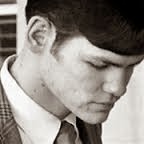 John Norman Collins - 1969Being from the Detroit area, I would watch WXYZ Channel 7 News with John Kelly and Marilyn Turner. That's when (three weeks later) I saw the picture of the person arrested for the murder of Karen Sue Beineman. It was the same person in the parking lot.
John Norman Collins - 1969Being from the Detroit area, I would watch WXYZ Channel 7 News with John Kelly and Marilyn Turner. That's when (three weeks later) I saw the picture of the person arrested for the murder of Karen Sue Beineman. It was the same person in the parking lot.I've thought about that encounter many times in my life. Perhaps that's why it is still so vivid. Guess it wasn't my time.
Pamela A.
Published on November 17, 2013 17:54
November 13, 2013
Dealing with the Truth - The Jane Mixer Murder
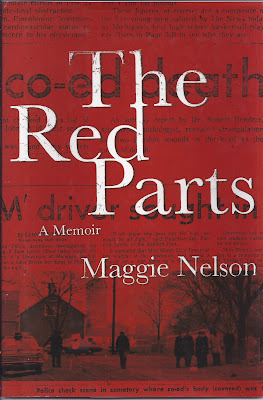 In her profoundly personal memoir, The Red Parts, Maggie Nelson has given readers a glimpse of what lies behind the curtain of American jurisprudence and its affect on the surviving members of one family. Miss Nelson is the niece of Jane Mixer, John Norman Collins' alleged third victim.
In her profoundly personal memoir, The Red Parts, Maggie Nelson has given readers a glimpse of what lies behind the curtain of American jurisprudence and its affect on the surviving members of one family. Miss Nelson is the niece of Jane Mixer, John Norman Collins' alleged third victim.Thirty-six years after Jane's perplexing murder on March 20, 1969, the Mixer family had to endure testimony of the details of her tragic death in a trial held in Wayne County, Michigan in 2004. For over three decades, Jane's murder was lumped together with the five other unsolved killings in the Ypsilanti/Ann Arbor area, despite fundamental differences including where, how, and what condition the body was found.
Armed with a positive DNA match, as well as convincing circumstantial evidence, Gary Earl Leiterman, a retired male nurse working in Ann Arbor at the time, was found guilt of her murder. John Norman Collins claimed since the beginning that he never knew Jane, now he was exonerated for at least one of the seven Michigan murders he was accused of. Even a broken clock is right twice a day.
With unflinching honesty, Miss Nelson tells us the ins-and-outs of her aunt's case with brutal clarity and a benumbing sense of self-awareness that only comes from profound emotional trauma. Early in her book, she asks herself, "Who am I to tell Jane's story?" I can think of nobody better. Later in the book, she finds herself getting drawn into the media vortex of the trial and its aftermath. She has some insightful things to say about American media's fascination with the "dead-white-girl-of-the-week" club.
After reading Maggie Nelson's memoir, I am reminded that disturbing the feelings and memories of the families of the other victims in the Collins case is not to be taken lightly. These girls deserve to be remembered as living human beings, rather than victims of something wicked that happened in another time no longer relevant today. For their memories and what happened to them to simply fade away is unacceptable.
This is Ypsilanti, Michigan history, however unpleasant for individuals or for the city. The six other murdered girls deserve to have their stories told for the record as well, like Maggie Nelson did for the memory of her aunt, Jane Mixer. I want to honor those lost innocents by relating the most accurate account of these matters as possible and bringing some degree of closure to people who cared about these young women. In the end, the public needs the truth.
http://www.trutv.com/library/crime/serial_killers/predators/collins/13.html
Published on November 13, 2013 14:39



